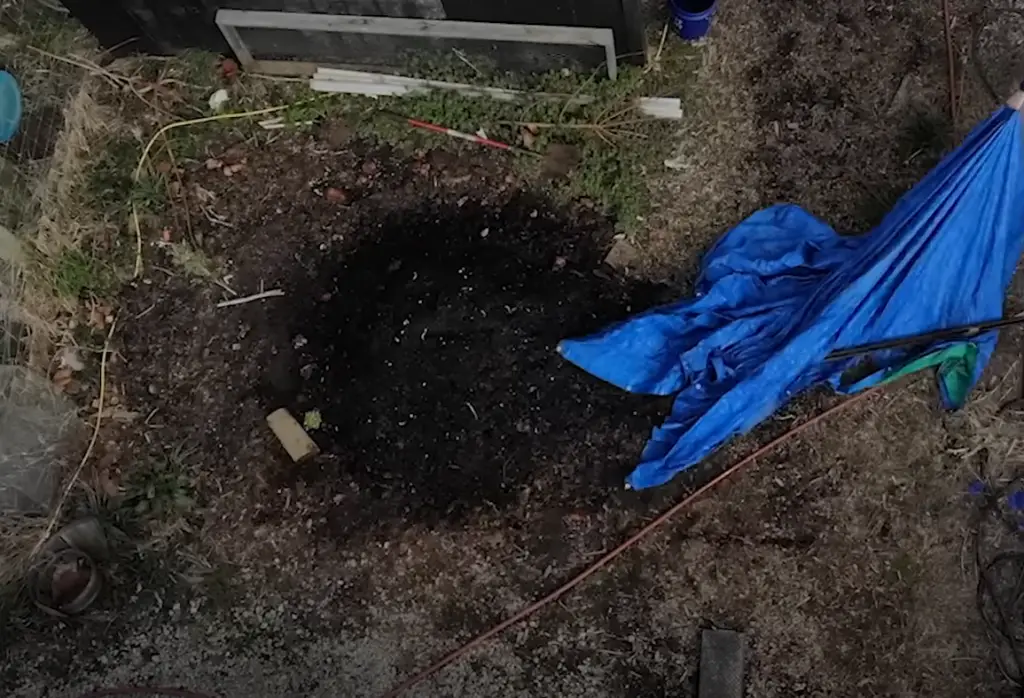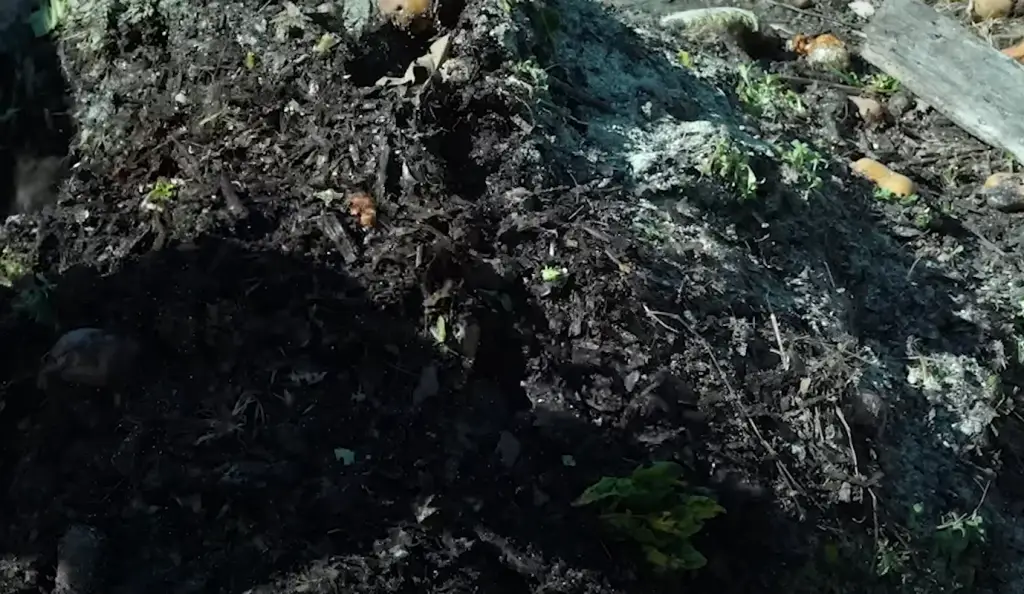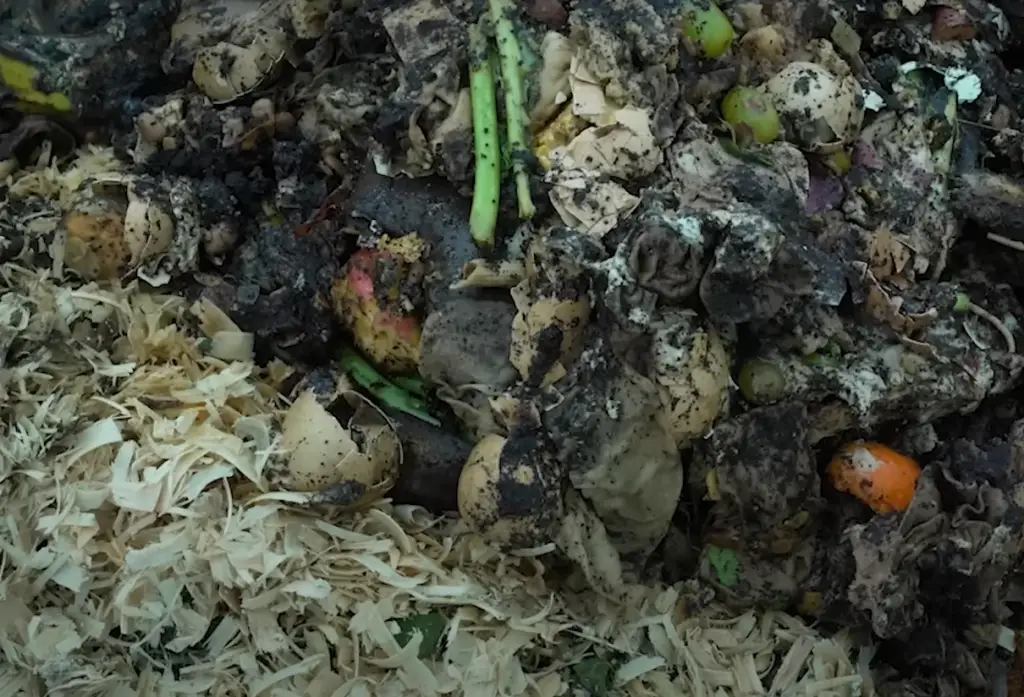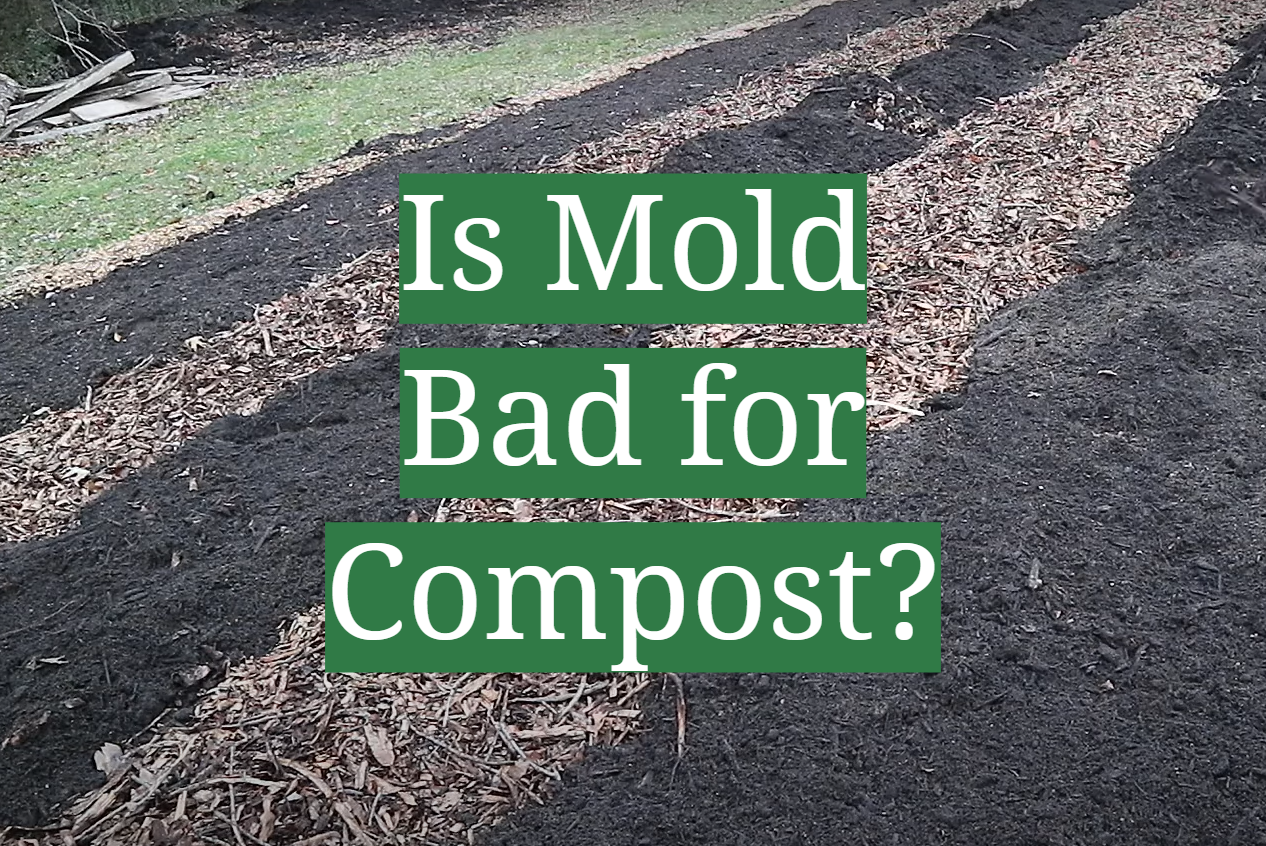Composting is a great way to reduce your waste and create nutrient-rich soil for your garden, but what happens when mold begins to infest your compost bin? Is it still usable or should you throw it away and start over? The truth is that not all molds are bad for compost; however, there are some instances in which they can do more harm than good. In this post, we’ll explore the different types of mold present in compost bins and outline the key differences between beneficial and hazardous species so you can be sure you’re making the right choices for your garden!
Is Mold Bad for Compost?
Mold is a natural part of the decomposition process in composting, but it can also cause concerns for those who want to use the compost for gardening or agriculture purposes. [1] While not all molds are harmful, some can cause respiratory problems or allergies. Additionally, mold can indicate that the moisture level in the compost is too high, which can lead to an imbalance in the decomposition process and create an unpleasant odor. It is important to remember that mold is a part of nature and a certain amount of it in your compost is normal.
Types of Mold in Compost
Composting is a wonderful way to give back to the earth and reduce waste. However, it’s important to know that there are various types of mold that can grow in compost.

While most mold in compost is harmless and can even aid in the decomposition process, some types can be harmful to humans and animals. The most common types of mold found in compost include white mold, blue mold, and black mold.
Compost Mold Colors and Their Causes
White mold is typically the most common type of mold found in compost. It usually appears as a white or off-white fungus that grows on the surface of organic material, such as leaves or food scraps. The presence of white mold indicates an anaerobic environment with high moisture levels, which can be caused by too much water being added to the compost pile or not enough air circulation. [2]
Blue mold is another type of mold commonly seen in compost. This will appear as a light blueish-gray color and is often associated with high levels of nitrogen, which can occur when adding too much grass clippings or other nitrogen rich materials to the compost pile. Blue molds are generally considered to be beneficial for decomposition but should still be monitored to ensure that they are not getting too out of control. [3]
Finally, black mold is one of the most harmful types of mold found in compost bins. This dark brown or black fungus can cause respiratory problems and allergic reactions in humans and animals. Black molds typically grow due to anaerobic conditions with high levels of moisture and lack of air circulation. [4]
The Only Mold Color That May Cause Problems in Your Compost
Black mold is the only type of mold that may cause problems in your compost. As previously mentioned, black molds can be harmful to humans and animals, causing respiratory issues or allergies.
To prevent black molds from forming, ensure that you are adding enough air circulation to the compost pile by turning it regularly and monitoring the moisture levels. [5] Additionally, avoid adding too much nitrogen-rich material such as grass clippings or manure to the compost pile as this can create anaerobic conditions where these types of molds thrive. If you do find black mold in your compost bin, it is best to remove it with a shovel and discard it. If the mold is widespread, you may need to start the composting process over again.Basic Requirements of Compost
The key to avoiding mold problems in compost is maintaining the right moisture and oxygen levels. Too much moisture can encourage mold growth while too little can prevent proper decomposition from taking place.

Additionally, compost needs air circulation to help break down organic matter; without adequate airflow, anaerobic bacteria will take over and cause odors or sickness. The ideal balance for a healthy compost bin is around 40-60% moisture and plenty of oxygen through turning or aeration. With these two factors in check, you can ensure that your compost remains safe from hazardous molds that could pose a threat to your garden.
What Can You Add to Your Compost Pile?
Composting is an eco-friendly and easy way to transform your food scraps and yard waste into nutrient-rich soil that can improve the health of your garden. But what exactly can you add to your compost pile? The options are abundant and include fruit and vegetable scraps, coffee grounds, eggshells, grass clippings, leaves, and wood chips. [6] By adding a variety of organic materials, you can create a diverse environment for microorganisms to break down the waste and turn it into a valuable resource for your plants. So next time you’re wondering what to do with your leftover apple core or grass clippings, consider adding them to your compost pile for a richer, greener tomorrow.
Things That Should Not Be Thrown in a Compost Pile
Not everything can be thrown into a compost pile, and it is important to know what materials should be avoided. Meat and dairy products should not be included in compost as they can attract pests, create odors, or encourage bacteria growth that could make people sick.

Additionally, pet waste may contain parasites or bacteria that won’t break down properly in the compost bin and can contaminate other materials. Lastly, items like plastic bags, metal cans, glass bottles and Styrofoam containers should not be added to a compost pile as they will not decompose and will simply take up space without any benefit. [7]
Simple Ways to Fix Struggling Compost
Composting can be a tricky process, and sometimes it can seem like nothing is going right. Fortunately, there are some simple ways to fix any struggling compost piles so you don’t have to start from scratch. Here are five of the most effective methods:
- Add More Carbon Material – Compost needs a balance between nitrogen-rich material (green waste) and carbon-rich material (brown waste). If your pile has too much green matter, add more brown matter to even out the ratio. This could include shredded newspaper or dry leaves.
- Aerate Your Pile – Compost benefits greatly from regular aeration as it helps oxygen reach all parts of the pile and lets excess moisture escape. The best way to aerate is by using a garden fork and turning the pile every few weeks.
- Keep Your Pile Moist – Compost should be moist, but not too wet or dry. To keep your compost pile at the ideal moisture level, use a hose with a light misting setting to lightly spray water on it once a week.
- Add Beneficial Microorganisms – These microbes help break down organic matter in the compost faster, resulting in richer soil for your plants. You can add beneficial microorganisms to your compost pile by spraying it with an aerobic compost tea.
- Reduce Amounts of Food Waste – Avoid adding large amounts of food waste such as rice or pasta, as these can attract pests and also take longer to break down. Stick with smaller, more manageable amounts of food waste such as vegetable scraps or coffee grounds.
By following these simple steps, you’ll be sure to get your compost back on track in no time! With a little effort and patience, you’ll soon have the perfect soil ready for your garden.
How Can I Tell When the Compost is Done
The process of composting is relatively simple, but it can take some time to determine when the compost is finished. Composting involves breaking down organic materials over a period of several months, and the compost may not be ready until up to a year has passed. However, there are some methods you can use to tell if your compost is done:
- Temperature – The temperature inside the pile should remain at least 130°F (54°C) for three days in a row. If this occurs, it usually means that the bacteria have had enough time to do their work and decompose the materials sufficiently.
- Texture – Finished compost should be dark brown and look like soil with small pieces of material still in it. The texture should be crumbly, not wet or slimy.
- Smell – Finished compost should have a pleasant earthy smell, not a rotting or sour odor.
- Color & Consistency – Compost is ready when it looks like rich soil and has an even color throughout the entire pile. It should also feel soft to the touch and break apart easily with your fingers when you squeeze it lightly.

If all of these criteria are met, then your compost is probably finished and can be used for gardening purposes! Be sure to sieve out any large pieces before adding it to the soil so that it doesn’t disrupt root growth or plant development.
FAQ
Why Does My Compost Have Mold?
Mold can often form in compost piles that are too wet or not aerated enough. Make sure your pile is moist, but not soggy, and turn the pile regularly to help with air circulation. You can also try adding more carbon material such as shredded newspaper or dry leaves to balance out the ratio of nitrogen-rich green waste.
How Often Should I Turn My Compost?
It depends on how active you want your compost to be. If you want it to decompose quickly, then turning it every two weeks should suffice. However, if you’re okay with a slower decomposition process, then you can get away with turning the pile once a month.
Is White Mold Bad in Compost?
White mold can be an indication that the pile is too wet or not getting enough air circulation.
If you’re still having issues, you can also try adding more carbon material such as shredded newspaper or dry leaves.Can You Compost Moldy Bread?
Yes, you can compost moldy bread as long as the mold is not toxic. Moldy bread still contains plenty of nutrients that can be broken down by bacteria and fungi in the compost pile and used to feed plants later on. Just make sure to break up the bread into small pieces before adding it to the compost so that it decomposes faster.
How Do You Clean a Moldy Compost Bin?
The best way to clean a moldy compost bin is to first remove the compost from the bin and dispose of it. Then, use a vinegar solution to scrub down the inside of the bin. You can also sprinkle baking soda in the bin while scrubbing for extra cleaning power. Once you’re done, rinse out the bin thoroughly with water and allow it to dry before adding new compost.
Is It Okay to Put Moldy Food Into the Compost?
Yes, you can put moldy food into the compost as long as the mold is not toxic. Moldy food still contains plenty of nutrients that can be broken down by bacteria and fungi in the compost pile and used to feed plants later on. Just make sure to break up the food into small pieces before adding it to the compost so that it decomposes faster.
What Will Happen if the Compost is Too Wet?
If your compost pile is too wet, it can lead to anaerobic or slow decomposition, which means that the organic matter will take longer to break down. This can also cause odors and attract pests such as flies and rodents. To prevent this from happening, make sure you add enough carbon material (brown waste) to balance out the nitrogen-rich green waste and keep the pile moist but not soggy. Additionally, aerate the pile regularly using a garden fork so that oxygen can reach all parts of the compost.
How Do I Keep My Compost From Smelling?
The best way to keep your compost from smelling is to make sure that the pile is moist but not soggy, and turn it regularly so that oxygen can reach all parts of the pile. Additionally, avoid adding large amounts of food waste such as rice or pasta as these can attract pests and take longer to break down. Stick with smaller, more manageable amounts of food waste such as vegetable scraps or coffee grounds. Finally, if you still have an issue with odors, you can try sprinkling some baking soda on top of the pile. This should help absorb any unpleasant smells coming from the compost.
Useful Video: #1 Reason Why Your Compost is Not Composting
Conclusions
Composting is a valuable tool for reducing our waste and providing nourishment to garden beds. However, it can only do its job if we are aware of the types of mold that may affect compost bins and take the appropriate steps to prevent or eliminate hazardous varieties. With proper maintenance, you can ensure your compost bin is full of beneficial mold that produces nutrient-rich soil without unwanted bacteria or a foul odor. So, whether you’re an experienced gardener or just starting out with composting, be sure to look out for potential mold issues in order to keep your bin safe and productive!
References:
- https://helpmecompost.com/home-composting/maintenance/mold-in-compost/#:~:text=Mold%20and%20fungi%20are%20a,cellulose%20found%20in%20woody%20substances.
- https://www.ecofmr.com/articles/understanding-white-mold-types-causes-prevention-treatment/
- https://jselabs.com/blog/types-of-mold-colors/
- https://www.gotmold.ca/education/what-is-black-mold
- https://vegplots.com/mold-in-compost/
- https://lomi.com/blogs/news/how-does-composting-work
- https://extension.uga.edu/publications/detail.html?number=B1189&title=food-waste-composting-institutional-and-industrial-application










Leave a Reply
View Comments